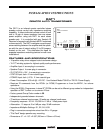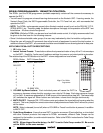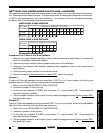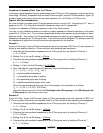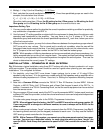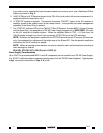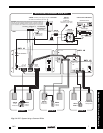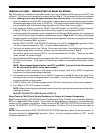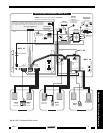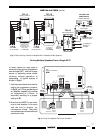
8
INSTALLATION – DEDICATED IR BUS SYSTEM
Fig. 4 illustrates an installation where each remote room has a Dedicated IR Bus going to the RAT1 that
controls it. The IR bus is not connected in common as it is in Fig. 3. This eliminates the need for dedicated
remotes,
allowing you to carry the same remote(s) from room-to-room.
It is configured as follows:
1. Again, for simplicity, only three RAT1's are shown. Larger systems may be configured, using the same
connection techniques (up to a max. of 16 RAT1's). 16 is the maximum number using 8-Ohm speakers
and an amplifier with a minimum loading impedance of 4 Ohms. See chart on page 3.
2. Each Dedicated IR Bus connects the 780-80 "J" Box IR Receiver, the two MIRV1 Volume Controls,
a 480-00 "Dinky Link" IR Receiver and a Smart Pad
3
keypad to their respective RAT1's.
3. In order to control the common source components in a Dedicated IR Bus system, it is necessary to
use a 793-00 Serial Control Combiner, connected as shown in Figs. 4 & 5. The 793 provides diode
isolation between the IR signal lines but allows common operation of the source equipment through
the 789-44 Connecting Block, as shown.
Set the LOGIC POLARITY SELECTOR DIP switches on the 793 for "active high" operation - that is
- all even numbered switches to "ON" - all odd numbered switches to "OFF".
4. The input and output ports on the 793 are 3.5mm mono mini jacks. Use matching mini plug cables
with stripped ends when connecting. Polarity must be observed as shown in Fig. 5.
For systems using more than five RAT1's, you will need additional 793-00's. These can be easily
"daisy chained" as shown in Fig. 5.
5. Since a Dedicated IR Bus system is used, each of the RAT1's (and MIRV1's) can operate with the same
IR Code Group number. In this case, the Code Group number, as received from the factory, should
be used.
NOTE: When shipped from the factory, the RAT1 (and MIRV1's) are set to Code Group number
30. Be sure to set the RC68+ to the same number!
If a particular system requires a code group number change, refer to the RC68+ Programmer
Instructions for code group setting procedures.
6. The desired volume commands from the RC68+ Programmer (see Fig. 2) need to be "taught" into
learning remote controls and keypads used in the system. You may use the Xantech URC learning
remote controllers for this purpose.
7. A 490-30 "Micro Link" IR Receiver plugs into the 789-44 for local control of the source equipment.
8. As in Fig. 3, a "STATUS" system is included.
NOTE:
When connecting system devices, be sure to carefully match up the terminals according to their
markings as follows:
IR IN (IR), STATUS (ST), GND (G) and +12VDC (V).
Daisy-Chaining 793-00 Serial Control Combiners for Control of Common Components
Fig.5 illustrates how two 793-00 Serial Control Combiners are "Daisy-Chained" to accommodate additional
RAT's in a dedicated IR Bus System. This process can be repeated as necessary to accommodate the
number of RAT's needed in the system. Simply connect the "B" CONTROL OUTPUTS port of the next 793
into the "A" CONTROL OUTPUTS port on the preceding 793 with a 3.5-to-3.5mm mono-mini cable as
shown.
NOTE: Be sure that all ten LOGIC POLARITY SELECTOR DIP switches on each 793 are set correctly. In
this case, set them for "active high" operation - that is - all even numbered switches to "ON" - all odd
numbered switches to "OFF".
RAT1



